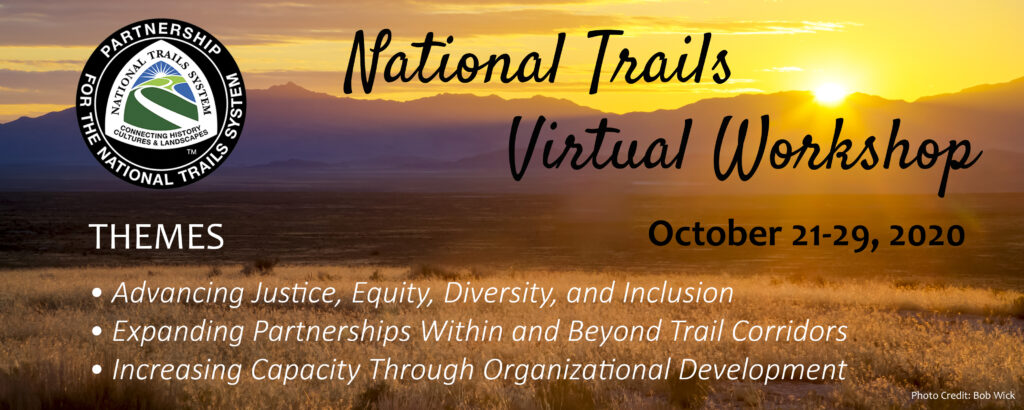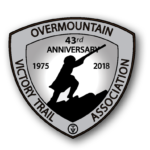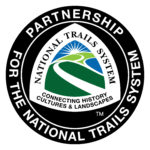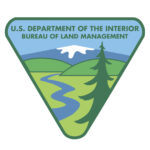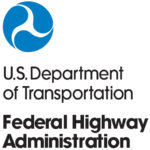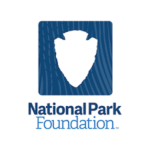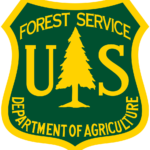Reference materials are organized by topic, below. We add content on a regular basis.
If you have materials you suggest we include as a resource, please email your suggestion and any pertinent documents or links communication@pnts.org
Trail Advocacy
Partnership for the National Trails System “State of the Trails Report” 2022
Partnership for the National Trails System “State of the Trails Report” 2022
Partnership for the National Trails System “Gold Sheet” of Volunteer Contributions in 2022
Partnership for the National Trails System “State of the Trails Report” 2021
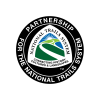
Partnership for the National Trails System “Gold Sheet” of Volunteer Contributions in 2021

Partnership for the National Trails System “State of the Trails Report” 2020
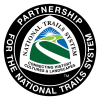
Partnership for the National Trails System “Gold Sheet” of Volunteer Contributions in 2020

Partnership for the National Trails System “State of the Trails Report” 2019

Partnership for the National Trails System “Gold Sheet” of Volunteer Contributions in 2019

Partnership for the National Trails System Partial Government Shutdown Impact Report – February 2019

Partnership for the National Trails System “State of the Trails Report” 2018

Partnership for the National Trails System “Gold Sheet” of Volunteer Contributions in 2018

Partnership for the National Trails System “Gold Sheet” of Volunteer Contributions in 2017
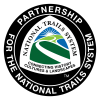
National Trails System and Land and Water Conservation Fund FY 2018 Request
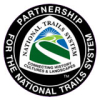
National Trails System and Land and Water Conservation Fund FY 2017 Request

Partnership for the National Trails System “Gold Sheet” of Volunteer Contributions in 2016

Partnership for the National Trails System “Gold Sheet” of Volunteer Contributions in 2015

Partnership for the National Trails System Land and Water Conservation Fund Statement

Partnership for the National Trails System “Gold Sheet” of Volunteer Contributions in 2014

National Trails System and Land and Water Conservation Fund FY 2016 Request

National Trails System and Land and Water Conservation Fund FY 2015 Request

Agency Partner Guides, Directives and Reports
Navigating and Applying for USFS Jobs
The United States Department of Transportation Strategic Framework FY 2022-2026
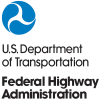
Interpreting the National Trails System Act – A Guide and Index
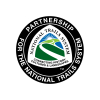
National Trails System Act
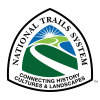
FHWA Small Town and Rural Multimodal Networks Resource
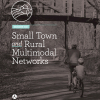
The National Trails System Memorandum of Understanding
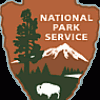
Management of National Scenic and Historic Trails
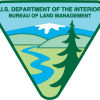
National Scenic and Historic Trails
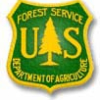
Director’s Order #45

Trail Management Areas

National Scenic and Historic Trail Administration

National Trails System Annual Report for FY 2013

National Trails System Act Legislative Documents

Trail Mapping and gis
National Trails System Maps

Virtual Trail: Online Adventures on the Oregon Trail

Continental Divide Trail Mapping Project
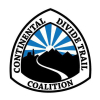
North Country Trail Interactive Map
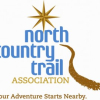
Trail Management
National Trails System Act Legislative Documents

Florida National Scenic Trail Visitor Assessment

Ice Age Trail Alliance Joint Effort Marketing Report 2012
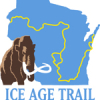
Appalachian Trail Conservancy Visitor Count Survey 2011
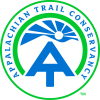
Federal Agency Visual Resource Documents

National Scenic and Historic Trails Administration (All Agencies)

National Scenic and Historic Trail Administration

List of National Scenic and National Historic Trail Organizations

Community Outreach
My Public Lands Middle School Teaching Guide
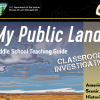
National Trails System Educational Resources

Trail Planning
Oregon-California Trails Association Strategic Plan

Arizona Trail Association Strategic Plan
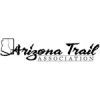
Trail Protection
Pacific Crest National Scenic Trail Optimal Location Review Process Guidelines
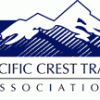
Volunteer Recruitment and Development
Chapter Leadership Handbook

Maintenance
Ala Kahakai National Historic Trail Management Plan

Planning a Trailhead Kiosk – 2020

Continental Divide NST – Trailhead Design Guidelines
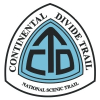
USDA – Trail Construction and Maintenance Notebook — 2007 Edition
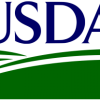
NPS – Inspection Guidance: 2200 Trail Bridges

North Country NST – A Handbook for Trail Design, Construction, and Maintenance

Continental Divide NST – Interpretive Plan

USDA Chain Saw and Crosscut Saw Training Course Handbook

Backcountry Sanitation Manual

OCTA Trail Classifications – Met Methodology

PNTS POLICIES:
- PNTS Statement of Inclusion (Approved February 8, 2020)
- Policy on New National Scenic and National Historic Trail Proposals (Approved December 4, 2019)
- Policy on Gas, Electric, and Other Linear Transmission Facilities (Approved November 2, 2013)
- Policy on Energy Generation and Communication Facilities (Adopted October 22, 2014)
- Policy on Appropriate Uses of National Scenic and Historic Trails (Approved February 8, 2015)
2020 Workshop:
2020 Virtual Workshop – Final Program with Recordings and Resources
Day 1 – Wednesday, October 21st
Session: Opening session and keynote address
Link to Powerpoint
Link to Recorded Session: https://youtu.be/xubFbqG5Kgg
Session Presenters:

- jose.g.a.gonzalez@gmail.com
- Opening Session: Wednesday 10/21 at 5 PM EDT & Justice, Equity, Diversity & Inclusion Principles & Community Agreements: Thursday 10/22 at 12 noon EDT & Moving Forward Through Teachable Moments: Thursday 10/22 at 2 PM
- http://www.josegagonzalez.com
Session Abstract:
Our opening session will welcome you to the workshop space with a color guard and land recognition. We will introduce the themes of the workshop with an emphasis on broadening our understanding of Justice, Equity, Diversity and Inclusion in the trails community. Meet the new Executive Director, Valerie Rupp and hear from our 2020 Fall Workshop Chair, RG Absher, as he lays out the program for the next 6 days. Come with an open mind and a willingness to engage.
Keynote speaker – José G. González, Founder and Director Emeritus of Latino Outdoors
José G. González is the Founder and Director Emeritus of Latino Outdoors. He is an experienced educator as a K-12 public education teacher, environmental education advisor, outdoor education instructor and coordinator, and university adjunct faculty. As a Partner in the Avarna Group and through his own consulting, his work focuses on Equity & Inclusion frameworks and practices in the environmental, outdoor, and conservation fields. He is also an illustrator and science communicator.
He serves as a Trustee for the National Outdoor Leadership School, a Trustee for the National Recreation Foundation, Resource Media Board Director, Nuestra Tierra Conservation Project Board Director, Councilor for Save the Redwoods League, and as an advisor to Blue Sky Funders Forum, among other such leadership volunteer roles.
Day 2 – Thursday, October 22nd
Justice, Equity, Diversity and Inclusion (JEDI) Principles & Community Agreements – How are we going to work with each other in this space?
Session Presenter(s):

- jose.g.a.gonzalez@gmail.com
- Opening Session: Wednesday 10/21 at 5 PM EDT & Justice, Equity, Diversity & Inclusion Principles & Community Agreements: Thursday 10/22 at 12 noon EDT & Moving Forward Through Teachable Moments: Thursday 10/22 at 2 PM
- http://www.josegagonzalez.com

- lila.leatherman@gmail.com
- Justice, Equity, Diversity & Inclusion Principles & Community Agreements: Thursday 10/22 at 12 noon EDT & Moving Forward Through Teachable Moments: Thursday 10/22 at 2 PM
- https://lamellaconsulting.com/
Session Abstract:
Community Agreements session: This facilitated one-hour discussion session is designed to discuss JEDI principles and to shape community agreements for discussing JEDI practices. “Community agreements” is used here to reflect the idea that the practices outlined have been discussed and reached collectively by the group. The goal of this session is to create a common understanding of community agreements, why they are an important JEDI practice, and provide a framework for creating the brave space needed for groups to take transformational action together. Group discussions will shape agreements for the following PNTS-members session, Moving Forward Through Teachable Moments (Thursday 10/22 at 2 PM – below)
Session Prework & Take-home Resources:
- Session Summary and Take Aways: https://drive.google.com/file/d/1s4lBNHvpxcm-M6ccKyQaIyAVVCT28FvH/view?usp=sharing
- Resources available on the Partnership’s website: https://pnts.org/new/resources/diversity-and-inclusion-resources/
______________________________
Staff & volunteers of PNTS member organizations: Moving Forward Through Teachable Moments: an opportunity for people to share and learn from each other’s teachable moments along the way of implementing and integrating justice, equity, diversity and inclusion (JEDI) practices
Session Presenter(s):

- jose.g.a.gonzalez@gmail.com
- Opening Session: Wednesday 10/21 at 5 PM EDT & Justice, Equity, Diversity & Inclusion Principles & Community Agreements: Thursday 10/22 at 12 noon EDT & Moving Forward Through Teachable Moments: Thursday 10/22 at 2 PM
- http://www.josegagonzalez.com

- lila.leatherman@gmail.com
- Justice, Equity, Diversity & Inclusion Principles & Community Agreements: Thursday 10/22 at 12 noon EDT & Moving Forward Through Teachable Moments: Thursday 10/22 at 2 PM
- https://lamellaconsulting.com/
Session Abstract:
Moving Forward Through Teachable Moments session: This session is a facilitated 1.5-hour discussion session to discuss learning experiences related to practicing and implementing JEDI concepts. The goals of the session will be to understand baselines for JEDI practice across the network, share “teachable moments,” and identify common themes related to opportunities and challenges of practicing JEDI. A survey distributed by the PNTS before the workshop will collect anecdotes of learning experiences. Three to five themes will be chosen from the survey to discuss and reflect on collectively as a group and within smaller breakout groups. The session will culminate with recommendations for moving forward.
Session Prework & Take-home Resources:
- Session Summary and Take Aways: https://drive.google.com/file/d/1s4lBNHvpxcm-M6ccKyQaIyAVVCT28FvH/view?usp=sharing
- Resources available on the Partnership’s website: https://pnts.org/new/resources/diversity-and-inclusion-resources/
______________________________
Justice, Equity, Diversity and Inclusion Best Practices as Developed by the PNTS Justice, Equity, Diversity and Inclusion workgroup
Link to Recorded Session: https://youtu.be/8H-RByrV0VY
Session Presenter(s):

- aacosta@appalachiantrail.org
- Justice, Equity, Diversity & Inclusion (JEDI) Best Practices as Developed by the PNTS JEDI workgroup Thursday 10/22 at 4 PM & Next Generation Alumni Panel: Wednesday 10/28 at 2 PM EDT
- https://appalachiantrail.org/

- jjudkins@appalachiantrail.org
- Justice, Equity, Diversity & Inclusion (JEDI) Best Practices as Developed by the PNTS JEDI workgroup: Thursday 10/22 at 4 PM EDT

- llituma1@gmail.com
- Justice, Equity, Diversity & Inclusion (JEDI) Best Practices as Developed by the PNTS JEDI workgroup: Thursday 10/22 at 4 PM EDT

- steven@elcaminorealdelostejas.org
- Justice, Equity, Diversity & Inclusion (JEDI) Best Practices as Developed by the PNTS JEDI workgroup: Thursday 10/22 at 4 PM EDT
- https://www.elcaminorealdelostejas.org/member-resources/

- vant@floridatrail.org
- Justice, Equity, Diversity & Inclusion (JEDI) Best Practices as Developed by the PNTS JEDI workgroup: Thursday 10/22 at 4 PM EDT
Session Abstract:
This session will dive into some best practices and programs that will help individuals and organizations take JEDI action. These recommendations are based on the ongoing learning experiences and collaborative efforts of the PNTS JEDI workgroup. Representatives of the PNTS JEDI workgroup will be sharing stories and examples of:
- Programming and engagement through affinity groups
- Efforts by national scenic and historic trails to address and affirm land acknowledgements
- Internal Practices & Ongoing Education
- Resources and recommendations by other organizations who are serving at the forefront of the JEDI efforts
Session Prework & Take-home Resources:
- Resources available on the Partnership’s website: https://pnts.org/new/resources/diversity-and-inclusion-resources/
Day 3 – Friday, October 23rd
Shaping, Sharing and Storytelling on the Selma to Montgomery National Historic Trail
Link to Powerpoint
Link to Recorded Session: https://youtu.be/_pgt3IcCdeA
Session Presenters:

- dwilliams@alasu.edu
- 334 – 229 – 6888
- Shaping, Sharing & Storytelling on the Selma to Montgomery National Historic Trail: Friday 10/23 at 12 Noon EDT

- drdautrey@gmail.com
- (334) 229-4824
- Shaping, Sharing & Storytelling on the Selma to Montgomery National Historic Trail: Friday 10/23 at 12 Noon EDT
- http://www.lib.alasu.edu/natctr/%20

- hrobinson@alasu.edu
- 334- 229 – 4491
- Shaping, Sharing & Storytelling on the Selma to Montgomery National Historic Trail: Friday 10/23 at 12 Noon EDT

- jfranklin@alasu.edu
- (334) 229 – 4106
- Shaping, Sharing & Storytelling on the Selma to Montgomery National Historic Trail: Friday 10/23 at 12 Noon EDT

- joy_kinard@nps.gov
- Shaping, Sharing & Storytelling on the Selma to Montgomery National Historic Trail: Friday 10/23 at 12 Noon EDT
- https://www.nps.gov/semo/index.htm

- mrhodes@nationalparks.org
- Shaping, Sharing & Storytelling on the Selma to Montgomery National Historic Trail: Friday 10/23 at 12 Noon EDT
- https://www.nationalparks.org/
Session Abstract:
From tragic beginnings to achievements that changed the world, from the evil of a slave ship to the beauty of a poem, the epic story of African Americans is embodied in hundreds of cultural institutions, museums, historic sites and places of memory. Through artifacts as objects of power, we have seen the lives of a far different America that is being re-examined through the lenses of a different generation. This panel will discuss the collaborative and strategic nature trails face to succeed in executing relationship building in multi-generational communities to tell stories that embodies social justice and creates healing in Selma and Montgomery, AL.
Session Prework & Take-home Resources:
- Film (23 min) The National Park Service has provided permission to have this new video of the story of the Selma to Montgomery National Historic Trail to be shared with attendees of the Partnership’s 2020 Virtual Workshop – The Way to Freedom: Selma and the Making of a Movement https://youtu.be/3RFbvSX7Ojo
- Dr. King’s speech from Montgomery: https://kinginstitute.stanford.edu/king-papers/documents/address-conclusion-selma-montgomery-march, http://americanradioworks.publicradio.org/features/prestapes/c4.html
- The National Center for the Study of Civil Rights and African-American Culture – http://www.lib.alasu.edu/natctr/

______________________________
The Fight for Rappahannock Tribal Recognition and the Protection of Fones Cliffs on the Captain John Smith Chesapeake National Historic Trail (Chesapeake Trail)
Link to Powerpoint
Link to Recorded Session: https://youtu.be/7Qtedf8F8OA
Session Presenters:
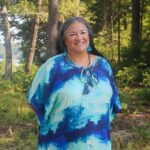
- The Fight for Rappahannock Tribal Recognition & the Protection of Fones Cliffs on the Captain John Smith Chesapeake NHT (Chesapeake Trail): Friday 10/23 at 2 PM EDT
- https://www.rappahannocktribe.org/

- jmccauley@chesapeakeconservancy.org
- The Fight for Rappahannock Tribal Recognition and the Protection of Fones Cliffs on the Captain John Smith Chesapeake National Historic Trail (Chesapeake Trail): Friday 10/23 at 2 PM EDT
- https://www.chesapeakeconservancy.org/

- jdunn@chesapeakeconservancy.org
- The Fight for Rappahannock Tribal Recognition and the Protection of Fones Cliffs on the Captain John Smith Chesapeake NHT (Chesapeake Trail): Friday 10/23 at 2 PM EDT & Working with Land Trusts and Partners Outside the Trail Community to Save National Trails: Tuesday 10/27 at 12 Noon EDT
- https://www.chesapeakeconservancy.org/
Session Abstract:
Virtual presentation on the Rappahannock Tribe’s 100-year fight for state and federal recognition and the 20-year effort of many partners, including the Rappahannock Tribe, to preserve Fones Cliffs, a key historic site along the Captain John Smith Chesapeake National Historic Trail in the heart of the Rappahannock Tribe’s homeland. Both efforts ultimately resulted in successful outcomes, just in the last two years.
Session Prework & Take-home Resources:
- Case study of Fones Cliffs: https://pnts.org/new/wp-content/uploads/2020/06/Case-Study-Fones-Cliffs.pdf
- Article from the BayJournal – June 11, 2020 https://www.bayjournal.com/opinion/forum/outdoors-act-could-come-to-the-rescue-in-uphill-battle-to-save-fones-cliffs/article_2e64eea2-a9b4-11ea-9114-db3dc4fd2160.html
- Washington Post article on how a white supremacist erased any acknowledgement of the tribal nations in the Commonwealth of Virginia: https://www.washingtonpost.com/local/how-a-long-dead-white-supremacist-still-threatens-the-future-of-virginias-indian-tribes/2015/06/30/81be95f8-0fa4-11e5-adec-e82f8395c032_story.html
- A drone video of the Fones Cliffs: https://drive.google.com/file/d/19GOaDti6a5AkgVk2tScdKpAyUBUKHTHT/view?usp=drive_web
______________________________
Interpreting the Stories of the Silent Voices: Acknowledging the lives of the oppressed and marginalized in your historic trail interpretation
Link to Powerpoint
Link to Recorded Session: https://youtu.be/TBry7Ju5Y6s
Session Presenters:

- info@ovta.org
- Interpreting the Stories of the Silent Voices: Acknowledging the lives of the oppressed and marginalized in your Historic Trail interpretation: Fri 10/23 at 4 PM EDT
- https://ovta.org/

- wgarrettjackson@gmail.com
- Interpreting the Stories of the Silent Voices: Acknowledging the lives of the oppressed and marginalized in your Historic Trail interpretation: Fri 10/23 at 4 PM EDT
- https://www.ovta.org/
Session Abstract:
From exploration and migration stories, to civil rights and armed conflicts, our historic trails tell the stories of our American heritage and events that shaped our historical and cultural narrative. History often records the thoughts, emotions, and daily lives of the “main characters,” however, the historical narrative rarely gives us a glimpse into that of the “supporting cast” or the silent voices in the overall story; lives no less significant, and shaped in ways that are important to our understanding of history. Through these perspectives, we can better prepare ourselves for present and future conflicts and put context to our past.
Using the Overmountain Victory National Historic Trail as a case study, this presentation will discuss the importance of researching and interpreting the lives and experiences of the silent voices and how research into the background narrative improves upon and often explains little known aspects of history, bringing attention to the advancement of justice, equity, diversity, and inclusion in our National Trails System.
Session Prework & Take-home Resources:
- Abingdon Muster grounds: https://abingdonmustergrounds.com/
Day 4 – Monday, October 26th
An Introduction to Protecting Trails: A Handbook for Land Acquisition for National Scenic and Historic Trails
Link to Powerpoint
Link to Recorded Session: https://youtu.be/GIaqELkhfD8
Session Presenter:

- djowenhome@gmail.com
- 304-283-4745
- An Introduction to Protecting Trails: A Handbook for Land Acquisition for National Scenic & Historic Trails: Mon 10/26 12 noon EDT & Working with Land Trusts and Partners Outside the Trail Community to Save National Trails: Tues 10/27 at 12 noon EDT
- https://pnts.org/new/
Session Abstract:
This session will provide Trail administrators, managers, staff, and volunteers with an introduction to a new guide to the basic tools for saving land to protect National Scenic and Historic Trails Protecting Trails: A Handbook for Land Acquisition for National Scenic and Historic Trails. The current estimate is that only 60% of the 58,000-miles of National Scenic and Historic Trails are protected by some form of federal, state, or local agency ownership or by fee ownership or conservation easements held by land trusts, historic preservation organizations, or in some cases, Trail organizations themselves. Thousands of miles along National Scenic Trails and thousands of high-potential historic sites and route segments along National Historic Trails still lack any legal protection. The handbook is designed to help Trail-administering agencies, Trail organizations, land trusts, and other partners work together to protect the remaining pieces of the National Trails System.
______________________________
How to Better Inventory, Assess and Monitor National Scenic & Historic Trails. The Bureau of Land Management’s New Training Effort
Link to Powerpoint
Link to Recorded Session: https://youtu.be/fAeAbr2fZQI
Session Presenters:
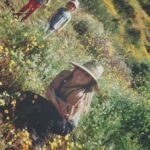
- cfarley@blm.gov
- How to Better Inventory, Assess and Monitor National Scenic & Historic Trails. The Bureau of Land Management’s New Training Effort: Monday 10/26 at 2 PM

- jcall@logansimpson.com
- How to Better Inventory, Assess and Monitor National Scenic & Historic Trails. The Bureau of Land Management’s New Training Effort: Monday 10/26 at 2 PM
- https://logansimpson.com/

- rsweeten@blm.gov
- How to Better Inventory, Assess and Monitor National Scenic & Historic Trails. The Bureau of Land Management’s New Training Effort: Monday 10/26 at 2 PM
Session Abstract:
The Bureau of Land Management (BLM) has created methodology and a field guide that provide recommendations for inventory, assessment, and monitoring of National Scenic and Historic Trails. These tools have been designed to help BLM and other trail managers/partners implement the policies and purposes set forth in the National Trails System Act and other applicable laws and policies. These technical references advance a consistent and repeatable approach while considering all of the resources, qualities, values, and associated settings found along these national treasures, be it recreation, natural, cultural, historical, or scenic. This presentation covers these new methodologies and how they can enhance collaboration within the National Trails community. BLM is grateful for the financial support of the Federal Highways Administration and in-kind support by the Partnership for the National Trails System and the US Forest Service who has ground tested these methods.
Session Prework & Take-home Resources:
- BLM Technical reference 6280 Vol 1: https://drive.google.com/file/d/138-61ZHK4suw_OU7FYNWXoruATkcVn1t/view?usp=sharing
- BLM Technical reference 6280 Vol 2: https://drive.google.com/file/d/13iwrK3KjANezpChVdDU_nQwCoRWYxqPl/view?usp=sharing
- Technical Reference: https://www.blm.gov/learn/blm-library/agency-publications/technical-references
______________________________
How primary sources or first hand accounts and GIS can be used to establish and map a trail: A Case Study of the Northern Route of the Trail of Tears National Historic Trail
Link to Recorded Session:
Session Presenters:

- lostgeneration@embarqmail.com
- How primary sources or first hand accounts and GIS can be used to establish and map a trail: A Case Study of the Northern Route of the Trail of Tears National Historic Trail: Monday 10/26 at 4 PM EDT
- https://www.nationaltota.com/missouri

- How primary sources or first hand accounts and GIS can be used to establish and map a trail: A Case Study of the Northern Route of the Trail of Tears National Historic Trail: Monday 10/26 at 4 PM EDT

- TrailConsultingLLC@gmail.com
- How primary sources or first hand accounts and GIS can be used to establish and map a trail: A Case Study of the Northern Route of the Trail of Tears National Historic Trail: Monday 10/26 at 4 PM EDT
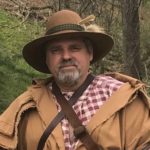
- rg.absher@ovta.org
- Opening Session and Welcome: Wednesday 10/21 at 5 PM EDT & How primary sources or first hand accounts and GIS can be used to establish and map a trail: A Case Study of the Northern Route of the Trail of Tears National Historic Trail: Monday 10/26 at 4 PM EDT & Working with Land Trusts and Partners Outside the Trail Community to Save National Trails: Tuesday 10/27 at 12 noon EDT
Session Abstract:
Through this panel presentation, you will learn how primary sources such as diaries, invoices and land patents can be used to establish and then map a route for a historic trail. And in this example, GIS was used in the reverse – starting with old surveyed road maps of high quality which made it possible to georeference from the road onto a map.
The Cannon Diary and the Diaries of Rev. Buttrick and Dr. H. I. I. Morrow on the Richard Taylor Detachment provided valuable information along with the invoices recently located in the National Archives. These primary resources complete the record of the use of the route with the names of landowners. Using BLM Land Patents researchers were able to match the current landowners. While many landowners are descendants of the original landowners, many were not aware that they own the land the trail traversed and that the Cherokee marched on the road. This work has kept the route alive and reconnected people along the route with the story.
Almost 10,000 Cherokee traveled in the winter of 1838-1839 across the Trail Cannon established. To learn more about the Trail of Tears National Trail go to the National Park Service Website and highlight Maps. Look for the Missouri state outline in red, the state where the River runs over the outer boot-heel. The Northern Route the Cannon Detachment established circles over and around southeast Missouri down to Pea Ridge Arkansas the path that more than 10,000 walked in 1838-1839.
Session Prework & Take-home Resources:
- Trail of Tears National Historic Trail website: https://www.nps.gov/trte/index.htm
- Trail of Tears Worksheet for documenting
Day 5 – Tuesday, October 27th
Working with Land Trusts and Partners Outside the Trail Community to Save National Trails
Link to J Dunn Powerpoint Link to L Hicklin Powerpoint Link to A Sentz Powerpoint Link to RG Absher Powerpoint
Link to Recorded Session: https://youtu.be/34RKO3Du6nw
Session Presenters:

- asentz@appalachiantrail.org
- Working with Land Trusts and Partners Outside the Trail Community to Save National Trails: Tue 10/27 at 12 Noon EDT
- https://appalachiantrail.org/

- djowenhome@gmail.com
- 304-283-4745
- An Introduction to Protecting Trails: A Handbook for Land Acquisition for National Scenic & Historic Trails: Mon 10/26 12 noon EDT & Working with Land Trusts and Partners Outside the Trail Community to Save National Trails: Tues 10/27 at 12 noon EDT
- https://pnts.org/new/

- jdunn@chesapeakeconservancy.org
- The Fight for Rappahannock Tribal Recognition and the Protection of Fones Cliffs on the Captain John Smith Chesapeake NHT (Chesapeake Trail): Friday 10/23 at 2 PM EDT & Working with Land Trusts and Partners Outside the Trail Community to Save National Trails: Tuesday 10/27 at 12 Noon EDT
- https://www.chesapeakeconservancy.org/

- Hicklin.laura@countyofdane.com
- 608.516.3096
- Working with Land Trusts and Partners Outside the Trail Community to Save National Trails: Tue 10/27 at 12 Noon EDT
- https://lwrd.countyofdane.com/

- rg.absher@ovta.org
- Opening Session and Welcome: Wednesday 10/21 at 5 PM EDT & How primary sources or first hand accounts and GIS can be used to establish and map a trail: A Case Study of the Northern Route of the Trail of Tears National Historic Trail: Monday 10/26 at 4 PM EDT & Working with Land Trusts and Partners Outside the Trail Community to Save National Trails: Tuesday 10/27 at 12 noon EDT
Session Abstract:
Land trusts are natural “sister organizations” for National Scenic and Historic Trail organizations and agencies that seek to protect, administer, and manage National Scenic and Historic Trails. In fact, most land trusts have conserving recreational, scenic, and historic resources like National Scenic and Historic Trails as part of their core mission. In addition, Trail organizations and agencies often can find other partners, such as Native American tribes, local governments, and even Department of Defense agencies to help save land for National Trails. This workshop will focus on how to partner and work with land trusts and other partners of all shapes and sizes to save important lands and resources along National Scenic and Historic Trails.
______________________________
Great American Outdoors Act, Part I: Lessons Learned and How to Use Them to “Win the Win”
Link to Powerpoint
Link to Recorded Session: https://youtu.be/N6OmgrjBSa0https://youtu.be/N6OmgrjBSa0
Session Presenters:

- alindholm@outdoors.org
- Great American Outdoors Act, Part I: Lessons Learned and How to Use Them to “Win the Win”: Tues 10/27 at 2 PM EDT
- https://www.outdoors.com/

- kdecoster56@gmail.com
- Great American Outdoors Act, Part I: Lessons Learned and How to Use Them to “Win the Win”: Tues 10/27 at 2 PM EDT
- https://www.lwcfcoalition.com/
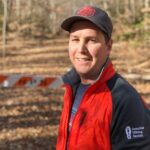
- tray@americanhiking.org
- Great American Outdoors Act, Part I: Lessons Learned and How to Use Them to “Win the Win”: Tues 10/27 at 2 PM EDT
- https://americanhiking.org/
Session Abstract:
Passage of the Great American Outdoors Act (GAOA) in the summer of 2020 was the culmination of many years of a focused campaign to fully and permanently fund the Land and Water Conservation Fund and address deferred maintenance needs at federal parks, forests and other public land areas. This session will look at “lessons learned” that led to achieving these long-standing goals, tapping into the expertise of the LWCF Coalition campaign director and individuals who worked on strategies and grassroots messages for both parts of GAOA.
Session Prework & Take-home Resources:
- LWCF Coalition Resources page (scroll down for state factsheets): https://www.lwcfcoalition.com/tools
- Blog on GAOA: https://www.lwcfcoalition.com/blog/the-great-american-outdoors-act-from-start-to-finish
- AHS Blog on GAOA: https://americanhiking.org/advocacy/what-the-great-american-outdoors-act-means-for-the-hiking-community/
- PNTS Facebook posts on how GAOA/LWCF has helped national trails: https://www.facebook.com/media/set/?vanity=PartnershipNTS&set=a.3686965314666339
______________________________
Great American Outdoors Act: PART II: A National Trails Campaign
Link to Powerpoint
Link to Recorded Session: https://youtu.be/XQE4Ls107xw
Session Presenter:

- rtipton1948@gmail.com
- Great American Outdoors Act, Part II: A National Trails Campaign: Tues 10/27 at 4 PM EDT
Session Abstract:
The Partnership Board has approved a multi-year National Trails “Action Plan” to protect sites and segments along the 30 National Scenic & National Historic Trails. This workshop will engage the workshop participants in a discussion of key aspects of the “Action Plan”. Ron Tipton, former President & CEO of the Appalachian Trail Conservancy and PNTS Board member, will give an overview of the Plan and facilitate a group discussion that focuses on the following questions:
- Examples of high priority sites and segments that need protection along the National Trails
- Effectiveness of the federal/non-profit partnerships in addressing trail protection and effective and sustained management of National Trails
- How do we promote the value of America’s National Trails through branding, marketing and social and traditional media?
- What are the opportunities to complete, protect and improve our National Trails provided by the Great American Outdoors Act?
Day 6 – Wednesday, October 28th
Fundraising During a Pandemic
Link to Powerpoint
Link to Recorded Session: https://youtu.be/Kd0_WupX32E
Session Presenter:

- cristina.wineinger@gmail.com
- Fundraising During a Pandemic: Wednesday 10/28 at 12 Noon EDT
Session Abstract:
Over the last few weeks (and many, many conversations) I have been asked the same questions over again. We are not on the front lines of the pandemic so how do we make our case for funding? Should we even be ‘bugging’ our supporters/members right now for donations? How do we get new donors? What should we be telling our donors? How in the world do we raise money during this pandemic?
The purpose of this seminar is to answer the above questions and more. We will explore the best strategies for keeping your donors close, making your case for support and inviting their gifts – all within the context of this very different fundraising landscape.
______________________________
Next Generation Alumni Panel
Link to Powerpoint
Link to Recorded Session: https://youtu.be/k89YLZpJPNI
Session Presenters:

- aacosta@appalachiantrail.org
- Justice, Equity, Diversity & Inclusion (JEDI) Best Practices as Developed by the PNTS JEDI workgroup Thursday 10/22 at 4 PM & Next Generation Alumni Panel: Wednesday 10/28 at 2 PM EDT
- https://appalachiantrail.org/

- halle.goldstein@audubon.org
- Next Generation Alumni Panel: Wednesday 10/28 at 2 PM EDT

- kayla@northeasttn.com
- Next Generation Alumni Panel: Wednesday 10/28 at 2 PM EDT
- https://www.northeasttn.com/
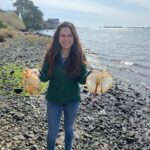
- alexis.puertoholmes@sonoma-county.org
- Next Generation Alumni Panel: Wednesday 10/28 at 2 PM EDT
- https://parks.sonomacounty.ca.gov/

- kellyvp@floridatrail.org
- Next Generation Alumni Panel: Wednesday 10/28 at 2 PM EDT
- https://www.floridatrail.org/
Session Abstract:
Next Generation Alumni Panel is a group of Trails Apprentice alumni who are sharing their own experiences with fellow young professionals and those that are interested in getting their foot in the door within the environmental field. Panelists will discuss their area of expertise, challenges, successes, and overall advice. Themes of the workshop include: Expanding Partnerships Within and Beyond Trail Corridors, Increasing Capacity Through Organizational Development, and Advancing Justice, Equity, Diversity, and Inclusion. Join us for an engaging presentation, ask questions, and learn more about various ways you can make a difference within the outdoor industry.
Day 7 – Thursday, October 29th
Utilizing Zoom and Other Technologies to Promote the National Trails
Link to Powerpoint
Link to Recorded Session: https://youtu.be/p2sn0PwJVOA
Session Presenter:

- info@nationaltrailsguide.com
- Utilizing Zoom and Other Technologies to Promote the National Trails: Thursday October 29th at 12 Noon EDT
Session Abstract:
This unique workshop will inspire participants to communicate their message more clearly in the online realm, covering a range of tools and strategies to use technology to promote our national trails. Some of what we will explore: storytelling tips to help enrich peoples’ experience of the trails; using images and video more effectively; bridging generation gaps and diversity across our communities; and an in-depth exploration of how to best utilize Zoom and other video platforms.
It’s a daunting task to understand and utilize the ever-changing technologies and communication choices we are all faced with — yet we need to stay on top of it. The ideas and techniques that will be explored are designed for youth and veteran trail professionals alike. Let’s help each other learn more together.
Frustrations abound with our ongoing screen time and trails associations and advocates can always use some support. This workshop will help leaders stay informed, including examples of trail apprentices and others’ successful projects.
Session Prework & Take-home Resources:
- Overview for Zoom preparation: https://www.entrepreneur.com/article/353419
- Video planning: American Society of Media Photographers, https://www.dpbestflow.org/node/635
______________________________
New Initiatives in Outdoor Engagement Policies at the State Level
Link to Powerpoint
Link to Recorded Session: https://youtu.be/6n_AuQcsGq0
Session Presenter:

- mcdowell@ncel.net
- Closing Session: New Initiatives in Outdoor Engagement Policies at the State Level & What’s Next for PNTS: Thursday 10/29 at 2 PM EDT
Session Abstract:
Dylan McDowell, Deputy Director of the National Caucus of Environmental Legislators, will provide insight into what is happening at the state level. States have taken a leadership role in implementing outdoor engagement policies that benefit recreation, health, education, and equity. Innovation generally starts at the state level and state legislatures are the starting point for many runs for Congress. This presentation will provide an overview of opportunities to partner with states through initiatives like the 30 x 30 (conserve 30% of land and water by 2030), the Great American Outdoors Act, wildlife connectivity, and outdoor access, health and equity to name a few.
Session Prework & Take-home Resources:
- Policies that Support Outdoor Recreation and Access: https://www.ncel.net/
wp-content/uploads/2020/01/ Outdoor-Rec-Policy-Options- 2020.pdf - Youth Outdoor Policy Playbook with policy ideas and case studies: https://
youthoutdoorpolicy.org/ - NCEL Outdoor Recreation webpage, that includes some cases studies: https://www.ncel.net/
outdoor-recreation/ - Rundown of 2020 outdoor policies that were introduced – access & wellness: LINK to PDF
Thank you to our sponsors, partners and hosts
The following organizations, businesses and agencies have made the Virtual Fall Workshop possible:
- Overmountain Victory Trail Association – Host
- PNTS Fall Workshop Committee
- Bureau of Land Management
- Federal Highway Administration
- National Park Foundation
- National Park Service
- U.S. Forest Service
